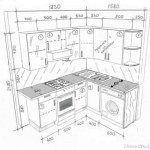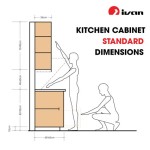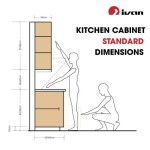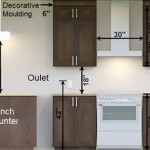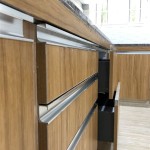Can You Put Water-Resistant Laminate Flooring in a Kitchen?
The question of whether water-resistant laminate flooring can be installed in a kitchen is a common one for homeowners undertaking renovation projects or new builds. The kitchen environment, characterized by frequent spills, moisture, and potential leaks, presents unique challenges for flooring materials. While traditional laminate flooring is known for its affordability and aesthetic appeal, its susceptibility to water damage has historically made it a less than ideal choice for kitchens. However, advancements in manufacturing have led to the development of water-resistant and even waterproof laminate options, blurring the lines and necessitating a closer examination of the possibilities.
Understanding the nuances of different types of laminate, their water resistance capabilities, and the specific needs of a kitchen environment is crucial for making an informed decision. Factors such as the quality of the laminate, the installation method, and the level of maintenance all play significant roles in determining the longevity and performance of the flooring in a kitchen setting.
Understanding the Difference Between Water-Resistant and Waterproof Laminate
It is imperative to distinguish between water-resistant and waterproof laminate flooring, as the terminology is often used loosely and can lead to misconceptions. Water-resistant laminate is designed to withstand exposure to moisture for a limited time. It typically features a water-resistant coating or core that slows down water penetration. If spills are cleaned up promptly, water-resistant laminate can perform adequately in areas with occasional moisture.
Waterproof laminate, on the other hand, is designed to completely repel water. It typically has a completely waterproof core, often made from materials like PVC or specialized polymers, and tightly sealed seams to prevent water from seeping through. This type of laminate can withstand prolonged exposure to moisture without warping, swelling, or developing mold or mildew. While no flooring is truly indestructible, waterproof laminate offers a significantly higher level of protection against water damage compared to its water-resistant counterpart.
The distinction is paramount when considering the kitchen environment. Kitchens are prone to frequent spills, leaks from appliances, and moisture from cooking. Choosing water-resistant laminate in a kitchen may provide a degree of protection, but it could still be susceptible to damage from prolonged or significant water exposure. Waterproof laminate offers a more robust and reliable solution for the demands of a typical kitchen.
Assessing the Needs of Your Kitchen
Before deciding whether to install water-resistant or waterproof laminate flooring, it is essential to conduct a thorough assessment of your kitchen's specific needs and potential risks. This assessment should encompass several key factors.
First, consider the frequency and type of spills that occur in your kitchen. Households with young children or individuals prone to accidents may experience more frequent and larger spills. The nature of the spills is also important. Water-based spills are generally less problematic than oil-based spills, which can stain and damage some types of flooring.
Second, evaluate the potential for leaks from appliances. Dishwashers, refrigerators with ice makers, and sinks are all potential sources of leaks. A history of leaks or recurring plumbing issues should be a red flag, indicating that waterproof flooring is the more prudent choice. Regular inspections of appliance connections and plumbing can help identify and mitigate potential problems before they cause significant water damage.
Third, assess the overall humidity levels in your kitchen. Kitchens with poor ventilation or those located in humid climates may experience elevated humidity levels, which can contribute to moisture buildup and damage to flooring. Proper ventilation, through the use of exhaust fans and open windows, can help reduce humidity levels and protect your flooring investment.
Finally, consider your lifestyle and cleaning habits. Individuals who routinely clean their kitchen floors with excessive amounts of water or who are less diligent about cleaning up spills promptly may benefit from the added protection of waterproof laminate. Regular maintenance, including sweeping and mopping with appropriate cleaning solutions, can prolong the life of any type of flooring.
Installation and Maintenance Considerations
Even the most water-resistant or waterproof laminate flooring can fail if it is not installed correctly or if it is not properly maintained. Proper installation is crucial for preventing water from seeping through seams and causing damage to the subfloor.
Professional installation is often recommended, particularly for complex kitchen layouts or for homeowners who lack experience with flooring installation. Professional installers have the expertise and tools to ensure that the flooring is properly aligned, secured, and sealed. They can also identify and address any potential issues with the subfloor before installation, preventing future problems.
If you choose to install the flooring yourself, carefully follow the manufacturer's instructions. Pay close attention to the preparation of the subfloor, ensuring that it is clean, level, and dry. Use the recommended underlayment to provide a moisture barrier and cushioning. When installing the laminate planks, ensure that the seams are tightly locked together to prevent water penetration.
Proper maintenance is equally important for prolonging the life of laminate flooring in a kitchen. Regular sweeping and vacuuming will remove dirt and debris that can scratch or damage the surface. When mopping, use a damp mop and a cleaning solution specifically designed for laminate flooring. Avoid using excessive amounts of water, as this can seep through the seams and damage the core of the flooring. Promptly clean up spills to prevent staining or water damage. Check the flooring regularly for signs of wear or damage, such as scratches, dents, or swelling. Address any issues promptly to prevent them from escalating.
In addition to regular cleaning, consider using mats or rugs in high-traffic areas, such as in front of the sink and stove. These mats can help protect the flooring from scratches, spills, and water damage. Periodically inspect and clean the mats to prevent them from becoming a source of dirt and moisture.
The type of underlayment used with laminate flooring also plays a role in its performance in a kitchen environment. Underlayment provides a moisture barrier, cushioning, and sound insulation. Choose an underlayment that is specifically designed for use with laminate flooring and that offers adequate moisture protection. Some underlayments also have antimicrobial properties, which can help prevent the growth of mold and mildew. Proper underlayment installation, including sealing the seams, is essential for maximizing its effectiveness.
Ultimately, the decision of whether to put water-resistant laminate flooring in a kitchen depends on a variety of factors, including the type of laminate, the specific needs of the kitchen, the installation method, and the level of maintenance. While water-resistant laminate may be suitable for some kitchens with minimal moisture exposure, waterproof laminate offers a more robust and reliable solution for the demands of a typical kitchen environment. Careful consideration of these factors will help homeowners make an informed decision and ensure the longevity and performance of their flooring investment.
Beyond the flooring itself, consider the other elements in your kitchen that contribute to water management. Ensure that your sink has a properly functioning drain and that the connections to the water supply are secure. Regularly inspect the hoses and connections of your dishwasher and refrigerator to identify and address any potential leaks. Install a leak detection system that can alert you to water leaks before they cause significant damage. These proactive measures can help prevent water damage and protect your flooring investment.
When selecting laminate flooring for your kitchen, pay attention to the warranty offered by the manufacturer. A longer warranty typically indicates a higher quality product and greater confidence in its durability and water resistance. Read the warranty carefully to understand the terms and conditions, including any limitations or exclusions related to water damage. Keep records of your purchase and installation for future reference.
Consider the aesthetic appeal of the laminate flooring in relation to the overall design of your kitchen. Laminate flooring is available in a wide range of colors, patterns, and textures, allowing you to create a cohesive and visually appealing space. Choose a style that complements your existing cabinetry, countertops, and appliances. Sample different flooring options in your kitchen to see how they look under different lighting conditions.
Finally, compare prices from different suppliers and installers to ensure that you are getting a competitive quote. While price should not be the sole determining factor, it is important to consider your budget and find a flooring solution that offers the best value for your money. Ask for detailed quotes that include the cost of materials, labor, and any additional services, such as subfloor preparation or removal of old flooring.

6 Ideas For Waterproof Kitchen Flooring Lx Hausys

The Best Waterproof Flooring Options Inc

Waterproof Laminate Flooring Review Pros And Cons

How To Make Laminate Flooring Waterproof Instructional Carpet Go

Waterproof Laminate For Your Kitchen Bathroom Is It The Best Choice Flooring Direct

Does Your Kitchen Required A Waterproof Flooring

The 6 Best Waterproof Laminate Flooring Brands Of 2024 Floorings

Does Your Kitchen Required A Waterproof Flooring

Advantages Of Water Resistant Laminate Flooring

Do You Lay Hybrid Flooring Before Or After Kitchen The Guys
Related Posts


